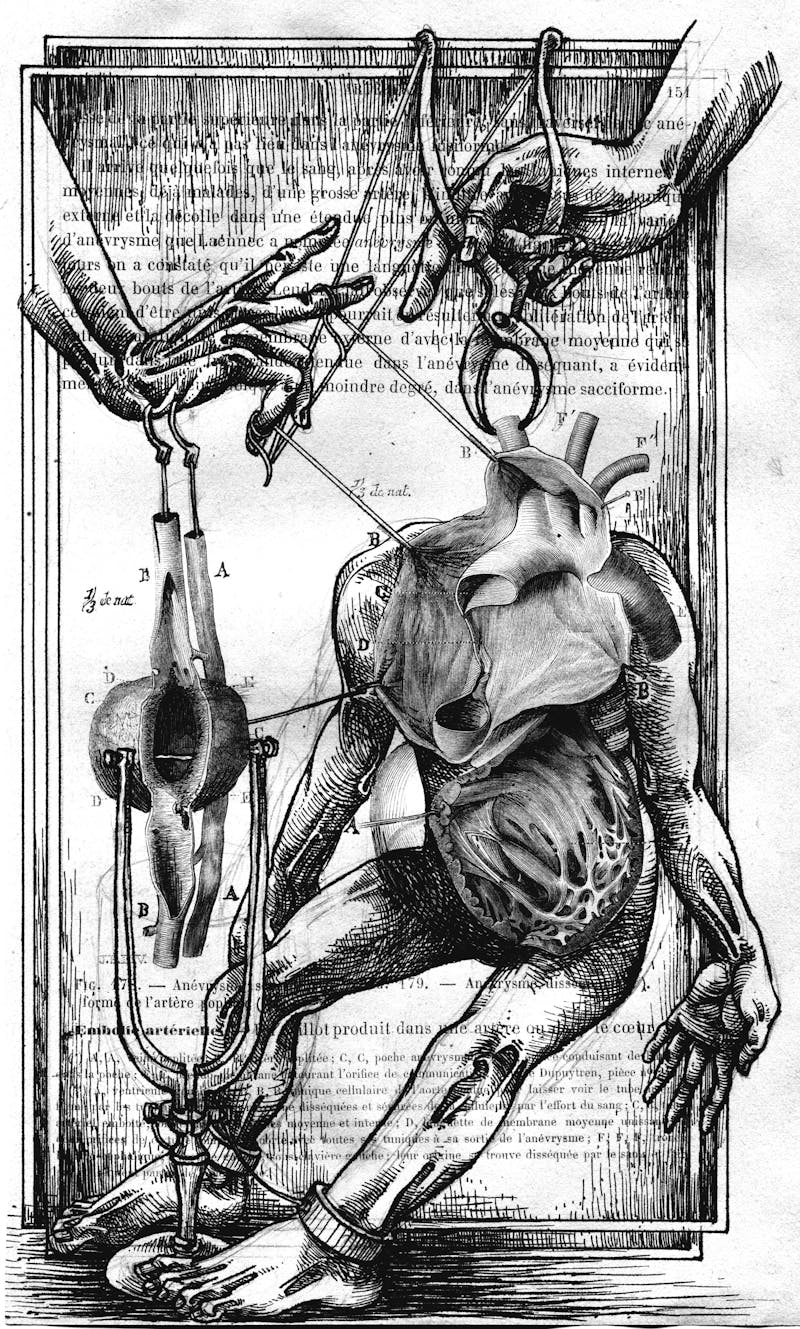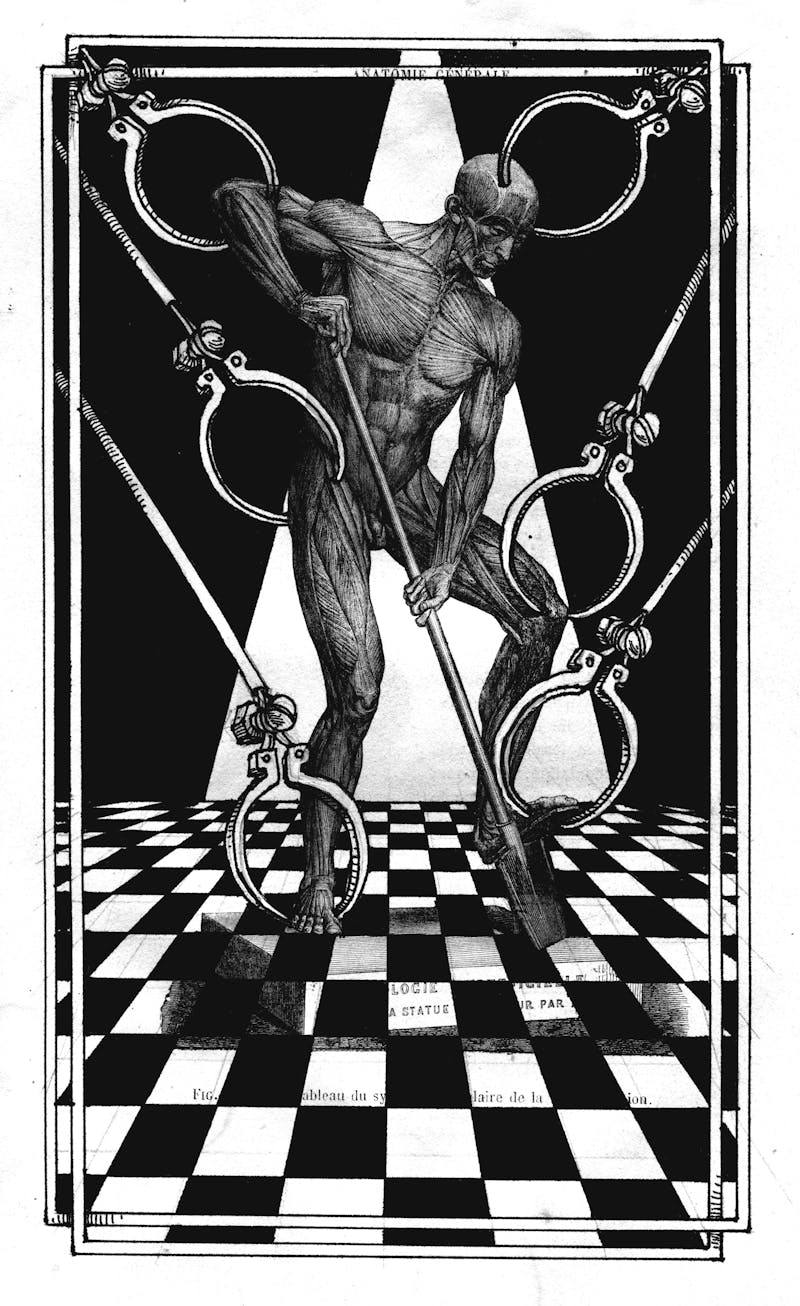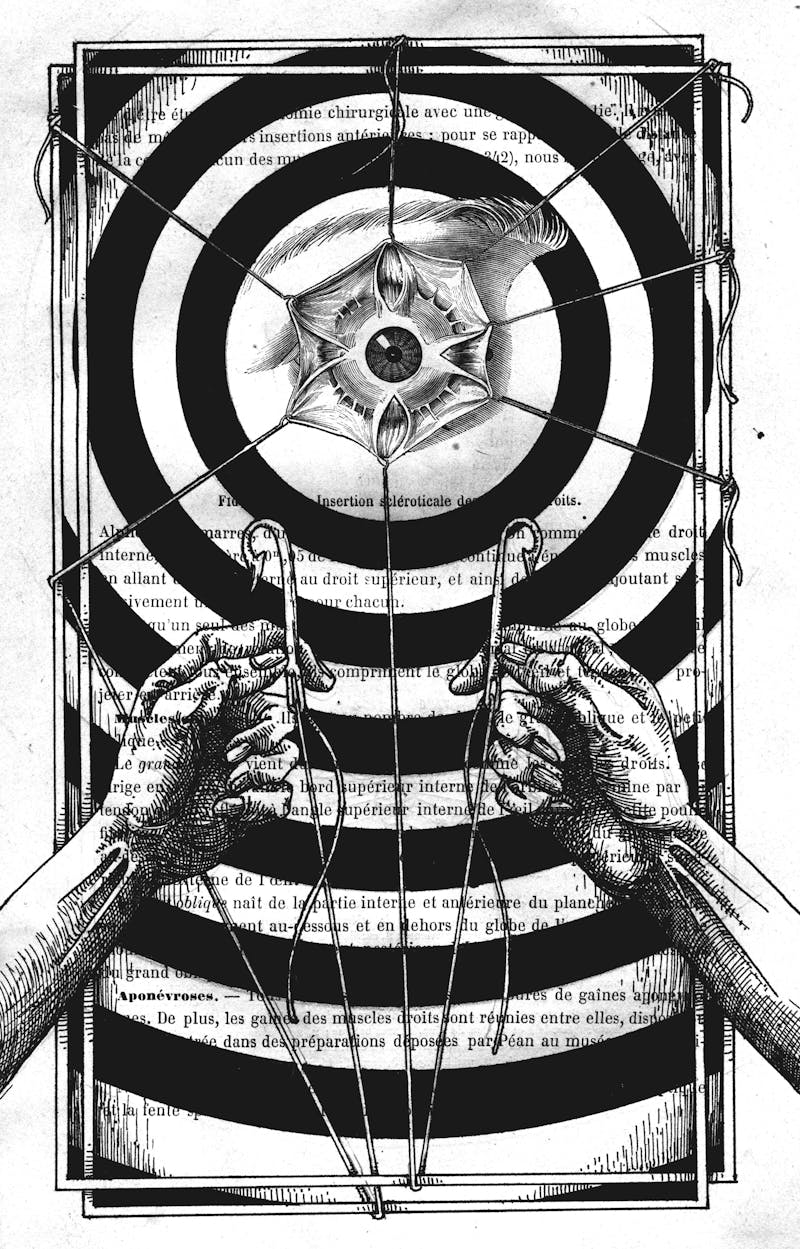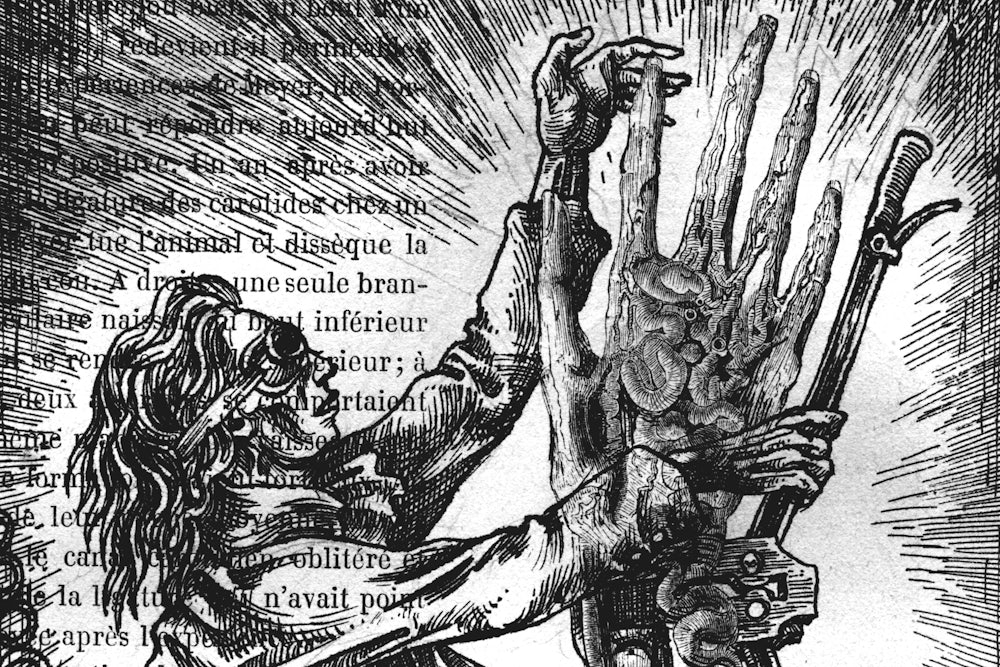In the introduction to
the 1831 edition of Frankenstein, which was
originally published anonymously in 1818 and which over the intervening years
(thanks partly to a series of low-comedy theatrical adaptations) had become a
bestseller, Mary Shelley offered a persuasive and romantic explanation of how
her book came to be written. The account of where and how Mary Shelley’s novel
originated may be among the most famous creation stories in literature; we
know, or think we know, the circumstances and the pressures under which a very
young woman turned a sort of parlor game into a book that would long outlive
her.
It was the summer of 1816. Mary Shelley was eighteen years old. Two years before, she had fallen in love with the poet Percy Bysshe Shelley, a frequent visitor to the home of her father, William Godwin, the political radical, freethinker, novelist, and, most famously, the author of An Enquiry Concerning Political Justice. Mary’s mother, the equally radical and perhaps even more unconventional Mary Wollstonecraft, had written A Vindication of the Rights of Woman, a protofeminist work that emphasized the importance of educating females. Before conquering her disapproval of the institution of marriage in order to marry Godwin, who shared her opinion of state-sanctioned wedlock, Mary Wollstonecraft borne an illegitimate daughter, Fanny, to an American entrepreneur and cad named Gilbert Imlay, whom she had met in Paris, where she had gone to observe, firsthand, the aftermath of the French Revolution. Mary Wollstonecraft died of an infection, within days of giving birth to her second daughter, Mary.
Having reversed his position on marriage, Godwin wed again. Mary Godwin despised her new stepmother, who brought to the household her own children: Charles and Jane, a high-strung, impulsive girl, two years younger than Mary. Jane, who would later rechristen herself Claire, flirted intensely with Shelley and was, for much of Mary Shelley’s early married life, the bane of her existence.
When he began visiting Godwin, Shelley was married and the father of a child. Nonetheless, he and Mary fell passionately in love, and they eloped and—together with fifteen-year-old Jane—left London for the Continent. What followed was a difficult period, its sufferings mediated only by the deepening of the young couple’s love. The emotionally volatile threesome traveled semiconstantly, under adverse conditions and nearly always on the verge of destitution. Mary gave birth to a baby, a daughter who was born prematurely and died after a few days.
Eventually Mary, Percy, and Jane (now Claire) came to rest at a cottage on the shores of Lac Leman in Switzerland, not far from where Lord Byron, who had become Claire’s lover, was staying, at the Villa Diodati. The group—Percy and Mary, Byron and Claire, and Byron’s physician, John William Polidori—had planned on spending the summer enjoying the beauties of the landscape and the lake. But when the weather turned cold and rainy—a volcanic eruption had turned it into one of the most inclement summers in European history—they sought another way to amuse themselves.
Perhaps in search of a respite from the long hours of intense and fevered conversation, the friends, who had been reading ghost stories translated from the German, agreed (at Byron’s suggestion) each to write a tale of the supernatural. The preface that Shelley wrote to the original 1818 edition of Frankenstein—an introduction that caused many to conclude that the book had been written by the poet himself—contains a somewhat simpler, less personal, and more truncated version of the events leading up to the novel’s composition than his wife would offer thirteen years later: “The season was cold and rainy,” wrote Shelley, “and in the evenings we crowded around a blazing wood fire, and occasionally amused ourselves with some German stories of ghosts, which happened to fall into our hands. These tales excited in us a playful desire of imitation. Two other friends…and myself agreed to write each a story founded on some supernatural occurrence.”

Shelley wrote, and never finished, a story set in childhood. A fragmentary work about a vampire, was attributed to Byron and later published by Polidori, who was in fact its author. Less facile and more reticent than her lover and his friends, Mary claimed to have had a harder time with the assignment. Perhaps part of her difficulties stemmed from the tensions among the storytellers. Byron had little respect for Mary and, it seems, even less for Claire, who was pregnant with his child. Polidori seems to have been in love with Mary, and Shelley was torn between his admiration for Byron and his desire to keep peace within the group. But what must have posed even more of a challenge was creating the effect that she sought: a story “which would speak to the mysterious fears of our nature and awaken thrilling horror—one to make the reader dread to look round, to curdle the blood, and quicken the beatings of the heart.… I felt that blank incapability of invention which is the greatest misery of authorship, when dull Nothing replies to our anxious invocations. ‘Have you thought of a story?’ I was asked each morning, and each morning I was forced to reply with a mortifying negative.”
One can hardly think of worse circumstances under which to create fiction than this ur-writer’s colony from hell, but Mary Shelley persevered. She mostly listened to the conversations between her husband and Lord Byron, discussions about philosophy, about the possibility that “the principle of life” would ever be “discovered and communicated.” They spoke about attempts to reanimate corpses of the newly deceased by the application of galvanic shocks, and about a Dr. Erasmus Darwin who was said to have preserved bits of vermicelli under glass until they began to move of their own volition. “Perhaps,” she wrote, “the component parts of a creature might be manufactured, brought together, and endued with vital warmth.”
During this time Mary may have been thinking of a trip that she and Shelley took, not long after their initial departure from London, along the Rhine, a region where there is a Frankenstein Castle and where, according to local legend, a young man named Konrad Dippel was accused of robbing graveyards for corpses that he believed could be reanimated by injecting them with a mixture of blood and bone.
One night, still puzzling over Byron’s assignment and trying to sleep, Mary had a vision in which she saw “the pale student of unhallowed arts kneeling beside the thing he put together. I saw the hideous phantasm of a man stretched out, and then, on the working of some powerful engine, show signs of life and stir with an uneasy, half-vital motion.” She lay awake, trying to imagine a story that would frighten the reader as much as she had been frightened, then realized that she had found it. “What terrified me will terrify others; and I need only describe the spectre which had haunted my midnight pillow. On the morrow I announced that I had thought of a story,” and set herself to making “a transcript of the grim terrors of my waking dream.” Shelley suggested that the narrative might be longer than what Mary originally had in mind.
The book was completed almost a year after their sojourn by the lake in June of 1817. In the interim, Mary and Percy returned to England. In October, Mary’s half sister, Fanny Imlay, committed suicide. And at the end of 1816, the Shelleys were married in London, their union having been facilitated by the fact that Shelley’s wife Harriet had drowned herself. Mary was pregnant with Shelley’s child, doubtless a source of anxiety since her first child, Clara, had died soon after birth and Mary’s own mother had died in childbirth. Little wonder, then, that the story Mary wrote would be so thoroughly steeped in violence, in grief, in loneliness and fear, in remorse and guilt.
In a survey of texts taught in schools, conducted by the Open Syllabus Project, Frankenstein is the fifth most commonly taught book and the most commonly taught literary text. And according to the preface to Miranda Seymour’s marvelously lucid and comprehensive biography, Mary Shelley, “A recent survey among American children showed [Frankenstein’s] name to be more familiar than that of the President.” Seymour fails to note if the interlocutor asked the American children to distinguish between Frankenstein the scientist in the Shelley novel and Frankenstein the image of Boris Karloff, the monster in the 1931 film.
The fact that the novel is so widely taught is slightly more perplexing. It’s understandable that, as a novel of ideas, it should serve as a convenient prompt to inspire class discussions on a range of important questions: What is a human being? Is it dangerous to play God? What are the ethical implications and limits of scientific research? What are the effects of isolation and alienation? But what makes it a slightly less obvious choice is the fact that it is a very difficult book—not so much because the language is old-fashioned but because the structure is exceedingly complex, containing stories within stories, letters within narratives, and multiple narrators; each segment of the novel informs and reflects upon the tone and content of the others.
The form of Frankenstein, the nest of stories within stories, each told by a different narrator, has mostly fallen out of fashion. But the “frame story” was very much in vogue during the heyday of the Gothic novel, a genre popular during the late eighteenth and early nineteenth century. Frankenstein is perhaps the most famous and enduring example, though Muriel Spark argues persuasively that it “was the first of a new and hybrid fictional species.” Shelley’s novel, Spark suggests, combines elements of the Gothic (the supernatural, the grotesque, the theme of pursuit, the frisson of terror) with a more modern portrayal of the relationship between Frankenstein and his monster. Caleb Williams, the novel that Mary’s father William Godwin published in 1794, is also a frame narrative and also locks its two main characters in a murderous game of flight and pursuit. Emily Brontë employed a similar strategy in Wuthering Heights, which appeared in 1847: the character Lockwood’s narrative (and diary entries) give way to, and are interspersed with, the housekeeper Nelly Dean’s account of the dramatic events at Wuthering Heights and Thrushcross Grange.
Gothic novels abound with manuscripts found in dusty trunks, with letters and pages ripped from journals, with narrators who happen to meet other narrators whose stories advance and explain their own. Such structures serves several purposes: they allow the writer to vary the pace and tone; they facilitate the introduction of information to which only one of the (multiple) narrators could have been privy; they provide the old-fashioned pleasures of eavesdropping on a storyteller telling a story; and they add an element of authority and credibility to a plot that contains fantastic and supernatural elements, and which might otherwise seem more unlikely than it does when we know that a presumably sane and reliable character is testifying to the truth of the wild events being described. The advantages of this method were not lost on Henry James. The Turn of the Screw is framed as a story told by a man who knew the ghost-plagued governess when he was younger, and who is in possession of a manuscript, written in her hand, that is “beyond everything… for general uncanny ugliness and horror and pain.”

Something similar could be said about the ugliness and horror of the events in Frankenstein, another story within a frame. The outside frame of the narrative comes to us from a presumably reliable source: Captain Robert Walton, who is writing to his sister, Margaret. Having given up hope of succeeding as a poet, Walton is traveling to the North Pole to conduct scientific research. His desire to discover the secret of magnetism (“the wondrous power which attracts the needle”) makes him the ideal listener for Frankenstein’s tale of scientific experimentation gone disastrously wrong.
Everything about Walton’s voice suggests rationality and plausibility, even as he describes what may be the most bizarre and disturbing (and certainly the most memorable) image in the novel, a “being which had the shape of a man, but apparently of gigantic stature” driving a dog sled across the icy wasteland. The next day, Walton’s shipmates rescue yet another traveler, this one “not a savage inhabitant of some undiscovered island, but a European” (albeit with a foreign accent), who is half-frozen, half-dead, emaciated, stranded on an ice floe, also together with a dog sled, though only one of his dogs survives. As we learn, this unfortunate traveler has been pursuing the giant whom Walton and his crewmates saw the day before.
This hapless voyager is Dr. Victor Frankenstein, who takes over the role of narrator as he tells his harrowing tale to the captain. He describes his youth, his upbringing, his family, his early interest in science, and the way in which that interest lured him down a dangerous path of inquiry. Fascinated by the work of Paracelsus and Albertus Magnus, encouraged by his professors, he immersed himself in chemistry and anatomy. He had begun to wonder if the dead could be reanimated, if new life could be created from what remains after the soul has left the body. After spending “days and nights in vaults and charnel houses,” observing “how the worm inherited the wonders of the eye and brain” and “the change from life to death, and death to life,” Frankenstein achieved a breakthrough: “After days and nights of incredible labour and fatigue, I succeeded in discovering the cause of generation and life; nay, more, I myself became capable of bestowing animation upon lifeless matter.”
To follow Frankenstein from his graveyard research to the point at which he is able to restore the dead to life places a certain strain on the reader’s trust—even those readers steeped in the conventions of the Gothic. Ghosts? Certainly. Resurrection by science? Not so much. Wisely, Shelley has Frankenstein inform Captain Walton that he is withholding the secret of his success for the captain’s protection, for his (and our) own good: “I see by your eagerness, and the wonder and hope which your eyes express, my friend, that you expect to be informed of the secret with which I am acquainted; that cannot be: listen patiently until the end of my story, and you will easily perceive why I am reserved upon that subject. I will not lead you on, unguarded and ardent as I then was, to your destruction and infallible misery. Learn from me, if not by my precepts, at least by my example, how dangerous is the acquirement of knowledge…”
Thus Mary Shelley finesses what we might now term “a plot hole.” Not only does the author advise us (in the interest of our own safety) to stop wondering about how precisely Frankenstein achieved his unholy effects, but she offers us yet another reason to keep reading (in case the mystery of the icy dog sled chase hasn’t sufficiently intrigued us). Read on, we are told, and you will find out why you would rather not be able to duplicate Victor’s experimental methods, “the horrors of my secret toil as I dabbled among the unhallowed damps of the grave or tortured the living animal to animate the lifeless clay.”
The thrill of victory and discovery is transient. Almost as soon as he succeeds in bringing his creation to life, Frankenstein comes face to face with a being whose hideousness seems to suggest the presence of an equally unappealing nature. One can’t help noting how often in the novel physical beauty is assumed to be an indication of good character, while ugliness is the manifestation of some moral flaw. This seemingly superficial but sadly accurate observation of how humans make judgments will become all the more important as the book progresses and as the monster—whose ugliness, size, and obvious abnormality are ultimately what make him a pariah—takes over the narrative and tells his own sad tale.

Frankenstein flees the monster and spends a restless night wandering the streets, where, by lucky accident, he runs into his friend Henry Clerval, who has just at that moment arrived from Switzerland. (The coincidence-averse may have reason to wonder at many such points in the book.)
Clerval remarks on the fact that his friend seems to be unwell: a bit of an understatement considering what the reader knows of Victor’s recent travails. Feeling that he has no choice but to bring Clerval back to his rooms, while at the same time fearing that the monster will still be there, Frankenstein returns home in one of the novel’s most successful moments—successful in the sense that we feel Shelley truly inhabiting her hero; she is making us feel what he feels:
My hand was already on the lock of the door before I recollected myself. I then paused; and a cold shivering came over me. I threw the door forcibly open, as children are accustomed to do when they expect a spectre to stand in waiting for them on the other side; but nothing appeared. I stepped fearfully in. The apartment was empty; and my bedroom was also freed from its hideous guest.
What Victor first experiences as relief and joy is in fact a recurrence of exhaustion, fear, and horror; the monster has escaped. Victor falls ill and is nursed back to health by the loyal Clerval. Meanwhile the narrative switches back to the epistolary form, in this case a letter from Victor’s beloved Elizabeth. The letter serves to introduce a character—the noble and loyal servant (though, we are informed, “a servant in Geneva does not mean the same thing as a servant in France and England”) Justine, who has nursed Elizabeth’s difficult aunt through her final illness, gone home to witness her own unstable and unkind mother’s death, and returned to be a help to the household. All in all, there is only good news, and Victor’s little brother William is reported to be thriving.
What seems like domestic gossip is in fact a clever setup for what is to follow. After a brief remission, during which Victor’s health rallies and he pays a polite if not entirely honest visit to his former teachers, another letter comes. This one is from Victor’s father, and is in effect an announcement that the nightmare has begun in earnest. Little William has been murdered.
It has often been remarked: the strangeness of Mary Shelley calling the dead child William, which was the name of her own beloved son, born in January 1816. But it has just as frequently been observed that it is common for writers, especially young ones, to spur themselves on with some version of their fantasies of the worst that could happen.
The unfortunate Justine, whom we have heard so much about in Elizabeth’s letter, has been accused of William’s murder. Like Victor, who knows that his monster is guilty of the crime but is certain that no one will believe him if he tells the truth, the reader can only watch as Justine is convicted of, and executed for, killing the child.
One hesitates to spoil the rest of Mary Shelley’s wild, inventive, twisting, but admirably coherent plot—coherent, that is, by the standards of the Gothic novel, in which one often feels as if the author is piling event upon event to maintain a slightly frantic pace and an unbroken sequence of dramatic events. And yet one can’t help noting a striking section that not only changes the way we read the novel but also alters our understanding of its author’s sympathies.
Wracked by guilt, wandering in a sort of desperately penitential way through the mountains, Victor again meets his monster, who now tells his own story: how he discovered a hut occupied by a blind man and his family; how he learned, from observing this family, about human behavior and the ideal sweetness that suffuses a household governed by love; how he was able to master the rudiments of language; how he taught himself to read by studying discarded books; how he first saw his reflection and understood how “deformed and loathesome” he was; how he hoped that he could be accepted and welcomed by the old man’s family despite his frightening appearance; and how cruelly that hope was dashed. Now his only wish is that Victor will create another artificial being, a mate for the monster, so that he will have a companion and not be doomed to go through the world alone.
In the process of telling his unhappy story, the monster shows himself capable of a complexity of moral and philosophical reflection that the other characters—spurred by near-diabolic ambition or overwhelmed by tragedy—cannot or will not allow themselves. Hidden outside the blind man’s hut, listening to one of its residents read aloud from a book entitled Ruins of Empires, the monster reflects on the human condition:
These wonderful narrations inspired me with strange feelings. Was man, indeed, at once so powerful, so virtuous, and magnificent, yet so vicious and base? He appeared at one time a mere scion of the evil principle, and at another as all that can be conceived of noble and godlike. To be a great and virtuous man appeared the highest honor that can befall a sensitive being; to be base and vicious, as many on record have been, appeared the lowest degradation, a condition more abject than that of the blind mole or harmless worm. For a long time I could not conceive how one man could go forth to murder his fellow, or even why there were laws and governments; but when I heard details of vice and bloodshed, my wonder ceased, and I turned away with disgust and loathing.
How brilliant of Mary Shelley to have put these thoughts and these speculations into the brain and the mouth of a monster, and how savvy of her—how wise, as they say, beyond her years—to realize that the questions that he asks have never been, will never be, answered. Nor will we tire of asking these questions about the limits of science and the essence of a human being. Her novel functions as an intellectual challenge, inviting us to ponder the profound issues raised by the monster and by the very fact of his existence.
At the same time Frankenstein exerts an emotional pull as powerful as the one for which Mary Shelley claimed in her preface to have strived: “to speak to the mysterious fears of our nature and awaken thrilling horror.” To this day, her book remains terrifying, not only because it traffics in graveyard horrors, in child murder and reanimated corpses, but also because it speaks to the anxieties to which all of us are prone. Which of us is immune to the fear that, like Victor Frankenstein, we may discover that our own work, our proudest creations, our offspring may turn against us—and that, with all the best intentions, we may wreak mayhem and havoc on those we love most, and least wish to hurt?
Reprinted with permission from Frankenstein: Or, The Modern Prometheus, published by Restless Books. Introduction © 2016 Francine Prose. Illustrations © Hector Stanislaw de la Garza. Published 2016. All rights reserved.
